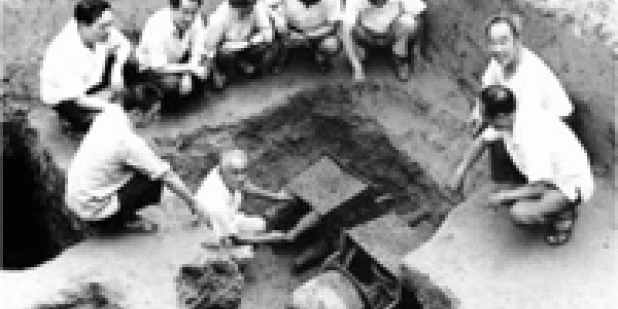Happy Lunar New Year from the USC US-China Institute!
China's First Empire? Interpreting the Material Record of the Erligang Culture
Haicheng Wang explores the Erligang culture and its significance.
Where

In the last few decades Chinese archaeology has documented a wide spread of material culture called the Erligang culture after a type site in modern Zhengzhou. Large-scale dissemination of a distinctive material seems to have been fairly common at the beginning of civilizations, probably the best known instance being the “Uruk expansion” in ancient Mesopotamia. Additional close parallels are provided by the Indus Valley civilization in the Old World and the Olmec civilization in the New World. In all four cases, the homogeneity of material culture over a large area suggests something more than casual contact: something of great magnitude was taking place, an intense interaction of some kind. So far, however, specialists have reached no consensus as to the social mechanisms involved, no agreement as to how things, ideas, and/or people were spreading. Although writing seems to have been in use in all four civilizations, inscriptions are few and poorly understood, so it is only from material culture that we can hope to learn anything about the archaeological problem. By comparing the four material cultures, I hope to draw up a list of possible models for cultural expansion, models that might not occur to us if we focused just on one region. Two major questions will be addressed. What are the criteria for correlating archaeological remains with political structures? What is the logic of privileging elite objects or utilitarian utensils in describing and interpreting the evidence of expansion?
Wang Haicheng earned his MA at Peking University (2000) and PhD at Princeton (2007). He is currently a Postdoctoral Fellow in the Center for Chinese Studies at UC Berkeley.
Featured Articles
We note the passing of many prominent individuals who played some role in U.S.-China affairs, whether in politics, economics or in helping people in one place understand the other.
Events
Ying Zhu looks at new developments for Chinese and global streaming services.
David Zweig examines China's talent recruitment efforts, particularly towards those scientists and engineers who left China for further study. U.S. universities, labs and companies have long brought in talent from China. Are such people still welcome?






